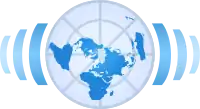Portal:Cities
The Cities Portal

A city is a human settlement of notable size. It can be defined as a permanent and densely settled place with administratively defined boundaries whose members work primarily on non-agricultural tasks. Cities generally have extensive systems for housing, transportation, sanitation, utilities, land use, production of goods, and communication. Their density facilitates interaction between people, government organisations and businesses, sometimes benefiting different parties in the process, such as improving efficiency of goods and service distribution.
Historically, city-dwellers have been a small proportion of humanity overall, but following two centuries of unprecedented and rapid urbanization, more than half of the world population now lives in cities, which has had profound consequences for global sustainability. Present-day cities usually form the core of larger metropolitan areas and urban areas—creating numerous commuters traveling towards city centres for employment, entertainment, and education. However, in a world of intensifying globalization, all cities are to varying degrees also connected globally beyond these regions. This increased influence means that cities also have significant influences on global issues, such as sustainable development, global warming, and global health. Because of these major influences on global issues, the international community has prioritized investment in sustainable cities through Sustainable Development Goal 11. Due to the efficiency of transportation and the smaller land consumption, dense cities hold the potential to have a smaller ecological footprint per inhabitant than more sparsely populated areas. Therefore, compact cities are often referred to as a crucial element of fighting climate change. However, this concentration can also have significant negative consequences, such as forming urban heat islands, concentrating pollution, and stressing water supplies and other resources. (Full article...)
Selected city -

Chongqing (/ˌtʃɒŋˈtʃɪŋ/ chong-CHING or /ˈtʃɒŋˌtʃɪŋ/ CHONG-ching; simplified Chinese: 重庆; traditional Chinese: 重慶; pinyin: Chóngqìng; Sichuanese pronunciation: [tsʰoŋ˨˩tɕʰin˨˩˦], Standard Mandarin pronunciation: [ʈʂʰʊ̌ŋ.tɕʰîŋ] (![]() listen)), alternately romanized as Chungking (/ˈtʃʊŋˈkɪŋ/), is one of the four direct-administered municipalities of the People's Republic of China (PRC). The official abbreviation of the city, "Yú" (渝), was approved by the State Council on 18 April 1997. This abbreviation is derived from the old name of a part of the Jialing River that runs through Chongqing and feeds into the Yangtze River. Chongqing is China’s major modernized manufacturing base, a financial center and an international transport hub in Western China. Geographically, Chongqing is strategically positioned as a gateway to China’s west, a key connection in the Yangtze River Economic Belt, and a strategic base for China’s Belt and Road Initiative.
listen)), alternately romanized as Chungking (/ˈtʃʊŋˈkɪŋ/), is one of the four direct-administered municipalities of the People's Republic of China (PRC). The official abbreviation of the city, "Yú" (渝), was approved by the State Council on 18 April 1997. This abbreviation is derived from the old name of a part of the Jialing River that runs through Chongqing and feeds into the Yangtze River. Chongqing is China’s major modernized manufacturing base, a financial center and an international transport hub in Western China. Geographically, Chongqing is strategically positioned as a gateway to China’s west, a key connection in the Yangtze River Economic Belt, and a strategic base for China’s Belt and Road Initiative.
Did you know -
- ... that the 66-room C. Ledyard Blair House on New York City's Fifth Avenue was sold and demolished barely a decade after its completion?
- ... that New York City's Coney Island has not been an island since the 1930s?
- ... that Industry faces Therapy?
- ... that the New York City Board of Education said Rose Freistater weighed too much to be a teacher?
- ... that the original entrance to New York City's 72nd Street station was once called "a miserable monstrosity as to architecture" and recommended for demolition?
- ... that the Sofia, a condominium building in New York City, was originally a parking garage?
Related portals
Related WikiProjects
![]()
- WikiProject Cities
- WikiProject Countries
- WikiProject Geography
 Recognized content -
Recognized content - 
 Clockwise from top left: All Saints Cathedral, Khusro Bagh, the Allahabad High Court, the New Yamuna Bridge near Sangam, the skyline of Civil Lines, the University of Allahabad, Thornhill Mayne Memorial at Alfred Park and Anand Bhavan |
Allahabad (pronunciation), officially known as Prayagraj, also known as Ilahabad, is a metropolis in the Indian state of Uttar Pradesh. It is the administrative headquarters of the Allahabad district—the most populous district in the state and 13th most populous district in India—and the Allahabad division. The city is the judicial capital of Uttar Pradesh with the Allahabad High Court being the highest judicial body in the state. Allahabad is the seventh most populous city in the state, thirteenth in Northern India and thirty-sixth in India, with an estimated population of 1.53 million in the city. In 2011, it was ranked the world's 40th fastest-growing city. Allahabad, in 2016, was also ranked the third most liveable urban agglomeration in the state (after Noida and Lucknow) and sixteenth in the country. Hindi is the most widely spoken language in the city.
Allahabad lies close to Triveni Sangam, the "three-river confluence" of the Ganges, Yamuna and Sarasvati rivers. It plays a central role in Hindu scriptures. The city finds its earliest reference as one of the world's oldest known cities in Hindu mythological texts and has been venerated as the holy city of Prayaga in the ancient Vedas. Allahabad was also known as Kosambi in the late Vedic period, named by the Kuru rulers of Hastinapur, who developed it as their capital. Kosambi was one of the greatest cities in India from the late Vedic period until the end of the Maurya Empire, with occupation continuing until the Gupta Empire. Since then, the city has been a political, cultural and administrative centre of the Doab region. In the early 17th century, Allahabad was a provincial capital in the Mughal Empire under the reign of Jahangir. (Full article...)Selected article -

A smart city is a technologically modern urban area that uses different types of electronic methods and sensors to collect specific data. Information gained from that data is used to manage assets, resources and services efficiently; in return, that data is used to improve operations across the city. This includes data collected from citizens, devices, buildings and assets that is processed and analyzed to monitor and manage traffic and transportation systems, power plants, utilities, water supply networks, waste, criminal investigations, information systems, schools, libraries, hospitals, and other community services. Smart cities are defined as smart both in the ways in which their governments harness technology as well as in how they monitor, analyze, plan, and govern the city. In smart cities, the sharing of data in not limited to the city itself but also includes businesses, citizens and other third parties that can benefit from various uses of that data. Sharing data from different systems and sectors creates opportunities for increased understanding and economic benefits.
The smart city concept integrates information and communication technology ('ICT'), and various physical devices connected to the Internet of things ('IoT') network to optimize the efficiency of city operations and services and connect to citizens. Smart city technology allows city officials to interact directly with both community and city infrastructure and to monitor what is happening in the city and how the city is evolving. ICT is used to enhance quality, performance and interactivity of urban services, to reduce costs and resource consumption and to increase contact between citizens and government. Smart city applications are developed to manage urban flows and allow for real-time responses. A smart city may therefore be more prepared to respond to challenges than one with a conventional "transactional" relationship with its citizens. Yet, the term itself remains unclear in its specifics and therefore, open to many interpretations. Many cities have already adopted some sort of smart city technology. (Full article...)General images -
Topics
List articles
Subcategories
Associated Wikimedia
The following Wikimedia Foundation sister projects provide more on this subject:
-
 Commons
Commons
Free media repository -
 Wikibooks
Wikibooks
Free textbooks and manuals -
 Wikidata
Wikidata
Free knowledge base -
 Wikinews
Wikinews
Free-content news -
 Wikiquote
Wikiquote
Collection of quotations -
 Wikisource
Wikisource
Free-content library -
 Wikiversity
Wikiversity
Free learning tools -
 Wiktionary
Wiktionary
Dictionary and thesaurus
-
 List of all portalsList of all portals
List of all portalsList of all portals -
 The arts portal
The arts portal -
 Biography portal
Biography portal -
 Current events portal
Current events portal -
 Geography portal
Geography portal -
 History portal
History portal -
 Mathematics portal
Mathematics portal -
 Science portal
Science portal -
 Society portal
Society portal -
 Technology portal
Technology portal -
 Random portalRandom portal
Random portalRandom portal -
 WikiProject PortalsWikiProject Portals
WikiProject PortalsWikiProject Portals



.jpg.webp)



_LACMA_M.2008.40.98.8.jpg.webp)








